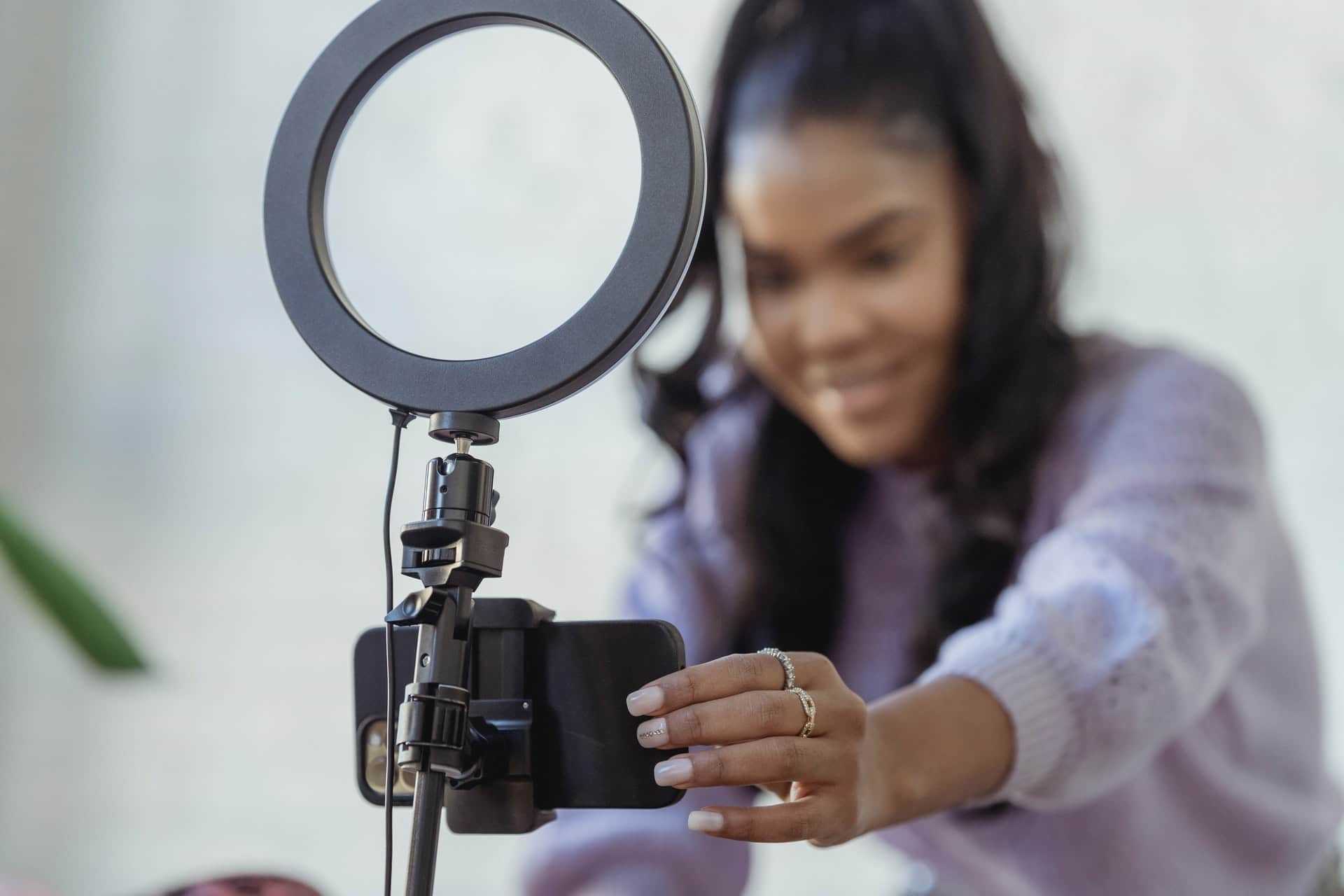A video resume might not replace the traditional resume just yet. Still, it's quickly becoming a game-changer, especially if you're in a creative field, applying for remote work, or looking to stand out in a crowded job market.
So if you're wondering how to make a video resume that gets results in 2025 (and beyond), you're in the right place.
Today's fast-paced job market makes recruiters scroll faster and view more applications than ever before. This means that a short and well-crafted video can give you a powerful edge (first impressions are often the strongest). It adds personality, shows off your communication skills, and demonstrates that you're comfortable with modern tools - a huge plus in remote and hybrid work environments.
Whether you're the type to avoid the spotlight or someone who thrives in front of the camera, this guide will help you approach your video resume with confidence. We'll cover what to include, how to structure it, which tools to use, and how to avoid common mistakes that could hurt your chances.
What Is a Video Resume?
A video resume is a short visual recording that highlights your professional background, skills, achievements, and (most importantly!) personality - something a traditional resume can only show so much. Think of it as a personal elevator pitch in visual form. It's typically submitted alongside a traditional resume and used to supplement, not replace, your job application.
PRO TIP: Always pair a video resume with a strong written resume, especially for Applicant Tracking Systems.
You might film it with your smartphone, edit it with a free app, and upload it to YouTube or Vimeo as an unlisted link. In some industries (especially media, marketing, tech, and startups), video resumes are becoming more expected and impactful.
Why Create a Video Resume in 2025?
It Shows You Can Adapt to Modern Trends

Recruiters in 2025 will evaluate your past experience and pay close attention to how adaptable, resourceful, and tech-savvy you are. Creating a video resume shows that you're comfortable with digital tools, virtual communication, and self-presentation. These are increasingly valuable soft skills across every industry, not just in creative or tech roles.
What's more, being able to craft a clear and compelling message in video format tells employers that you understand how people consume information today. Even if you're not applying for a job that requires video editing or public speaking, the fact that you took the time to produce a short, polished clip speaks volumes about your willingness to experiment and grow.
It Adds Personality
A written resume can only say so much - you can list quantifiable accomplishments, add in power verbs, and make sure your resume is ATS-compliant, but there's no tone, no facial expression, no spark.
A video resume, if done well, allows your personality to come through in a way that no bullet point ever could - it humanizes your application and helps hiring managers connect with you on a more personal level.
This is especially important for roles that require strong soft skills, such as PR/Communication, Sales, or Client Engagement. How you present yourself in these roles matters as much as what you've accomplished. With a video, potential employers can get a better sense of your enthusiasm, energy, and cultural fit.
PRO TIP: This can be very useful for career changers or those with unconventional professional paths, where your personality and attitude might be your strongest selling points.
People tend to hire people they like, so a friendly and confident video introduction can give you a head start just when you desperately need one.
It Helps You Stand Out
Job boards are flooded; hundreds of applications can roll in for a single opening. AI and ATS filters often exclude even qualified candidates. A video resume adds dimension to your application and gives recruiters a reason to pause and pay attention.
Embedding your video resume into your LinkedIn profile, portfolio site, or even within your email signature makes it easier for decision-makers to get a quick, memorable sense of who you are. It also creates a multi-touch experience: you're no longer just a name on a Word doc, but someone they've "met" (even if virtually). A well-done video resume can linger in a recruiter's mind long after they've closed their ATS dashboard. In a market where attention spans are short and first impressions happen fast, that kind of visibility is priceless.
When to Use a Video Resume
-
 Applying for creative, digital, or customer-facing roles
Applying for creative, digital, or customer-facing roles
-
 Entering industries like marketing, tech, design, or media
Entering industries like marketing, tech, design, or media
-
 Submitting a resume for remote or hybrid roles where communication is key
Submitting a resume for remote or hybrid roles where communication is key
-
 Targeting startups, scale-ups, or companies known for innovation
Targeting startups, scale-ups, or companies known for innovation
 Career changers who need to make a compelling case for transferable skills
Career changers who need to make a compelling case for transferable skills
-
 Applying through a platform that doesn't accept external links or attachments
Applying through a platform that doesn't accept external links or attachments
-
 Roles that are highly traditional or regulated (e.g., finance, law, government, or healthcare)
Roles that are highly traditional or regulated (e.g., finance, law, government, or healthcare)
 You're unable to produce a video with decent quality and clarity
You're unable to produce a video with decent quality and clarity
How to Make a Video Resume That Works

Step 1: Script Your Video
Plan what you want to say, but don't read it word-for-word; aim to sound natural and conversational. Imagine that you're introducing yourself to a new client or future colleague.
Here's a rough outline:
- Intro: Your name, title/role, and what you're looking for career-wise (or why you think this particular role will be a great fit for you)
- Value proposition: One sentence on what you bring to the table
- Core skills: Highlight 2–3 key skills with short examples
- Achievements: A quick story or stat to show your impact
- Closing: Call to action (e.g., "Let's connect" or "Thanks for watching")
Practice your delivery a few times so it doesn't sound robotic.
Step 2: Choose the Right Setting and Outfit
You don't need a fancy studio - a clean, quiet space with good lighting will do just fine. Natural light is great, especially if you position yourself facing a window to avoid harsh shadows. If natural light isn't available, use a ring light or desk lamp to evenly illuminate your face. Do not sit with a window or bright light source directly behind you, as it will create an unflattering silhouette or overexposed background.
Keep your surroundings simple and professional. A plain wall, a tidy bookshelf, a plant, or a minimal workspace works well. Remove clutter, posters, or anything that could distract the viewer. Make sure your camera is positioned at eye level (stack books or use a tripod), so you're not looking down or up into the lens.
Dress as you would for an in-person job interview. If you're applying for a corporate role, choose something polished and neutral; for more creative fields, show a bit more personality while still keeping it professional. Solid colors usually look better on camera than busy patterns. The goal is to make sure nothing in the shot takes attention away from what you're saying. This is your moment to look and feel confident.
Step 3: Record With the Tools You Have
You can shoot your video on a smartphone, webcam, or DSLR camera. Just make sure:
- The footage is stable (remember: tripod or stack of books)
- Audio is clear (consider a plug-in mic or quiet room)
- Lighting is even and flattering (face the window and shoot in the soft daylight)
- Record horizontally unless the platform prefers vertical content.
Step 4: Edit for Clarity and Flow
You don't need fancy software; apps like iMovie, CapCut, Clipchamp, or InShot can work well. Cut awkward pauses, filler words, trim the intro and outro, and add captions if needed. Subtitles are helpful too (sometimes your audience includes non-native speakers, or hiring managers might be viewing your video with a lowered volume button).
Keep the length at 60–90 seconds. Recruiters are busy.
Step 5: Upload and Share
Save your final file as an MP4 or MOV file. Upload it to YouTube, Vimeo, or Google Drive with privacy settings set to "Unlisted" (so only people with the link can view it).
Then share the link:
- In your resume (as a hyperlink, next to your LinkedIn URL in the Contact Details section)
- On your LinkedIn "Featured" section
- In your email signature
- Directly with recruiters or hiring managers
Best Practices for a Great Video Resume
✅ Keep it short and engaging: Your goal should be 60–90 secs.
✅ Look at the camera, not the screen: Eye contact builds trust, even through video.
✅ Speak clearly and smile: Practice sounding confident, not rushed or monotone.
✅ Include metrics: Improved revenue, team size, sales, and achieved KPIs - mention it. Just like a written resume, numbers speak volumes.
✅ End with a CTA (call to action): Close by thanking the viewer and inviting them to reach out.
Common Video Resume Mistakes to Avoid
❌ Reading from a teleprompter too obviously: If it sounds like you're reading, you'll lose authenticity. Instead, practice and internalize your script.
❌ Using background music: Unless you're applying for a role where sound editing is part of the job, skip the background music; it's often more distracting than helpful.
❌ Overediting or using flashy effects: Keep the focus on your message, not your transitions.
❌ Making it all about you: Frame your experience around how you help employers solve problems or reach goals.
Do You Need Professional Help?
At Resumeble, our team of certified resume writers can help you craft a strong traditional resume and guide you on how to integrate a video resume into your application strategy. We also offer support on LinkedIn profiles, which is often the best place to showcase your video introduction.
Video Resume Script Outlines That Work
Example 1: Marketing Coordinator
- Opens with a confident "Hi, I'm Jenna. I help brands grow through story-driven campaigns."
- Includes metrics like "Increased engagement by 43% in one quarter."
- Ends with: "If you're looking for someone who can turn insights into action, let's chat."
Example 2: UX Designer
- Begins with: "User-first design is my obsession."
- Walks through a 20-second case study
- Shows snippets of a design portfolio
Example 3: Customer Success Manager
- Focuses on empathy, communication, and retention
- Mentions tools: "I'm fluent in Salesforce, Intercom, and HubSpot
- All three are under 90 seconds.
Final Word: Should You Create a Video Resume?
If you're wondering how to create a video resume that enhances (not replaces!) your traditional resume, here's the short answer: yes, you should consider it. Just be strategic and know your audience: polish your pitch and make sure your video adds something meaningful to your application. Recruiters are curious. They'll click your link, so it's your job to make sure that what they find builds confidence in you as a candidate.
